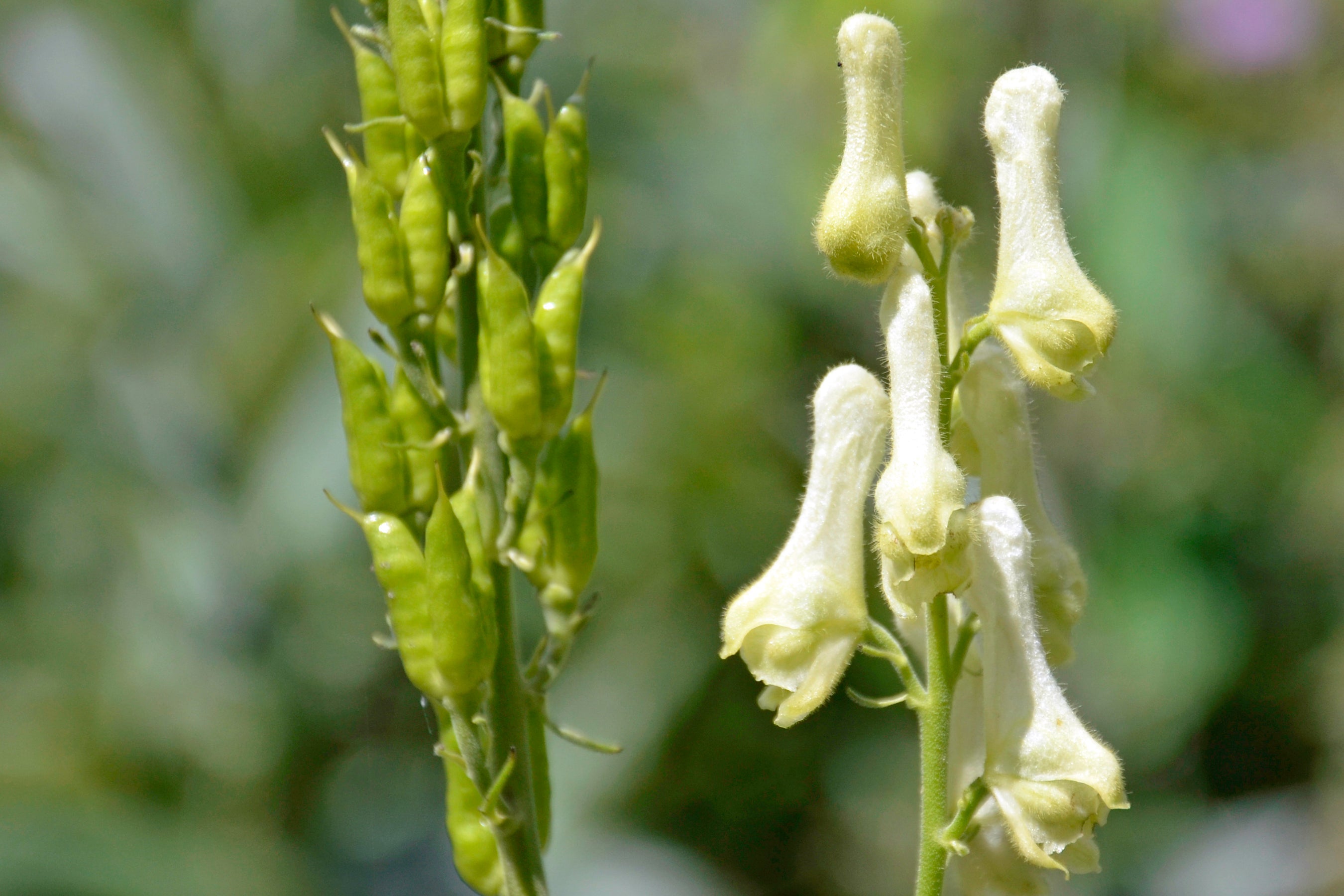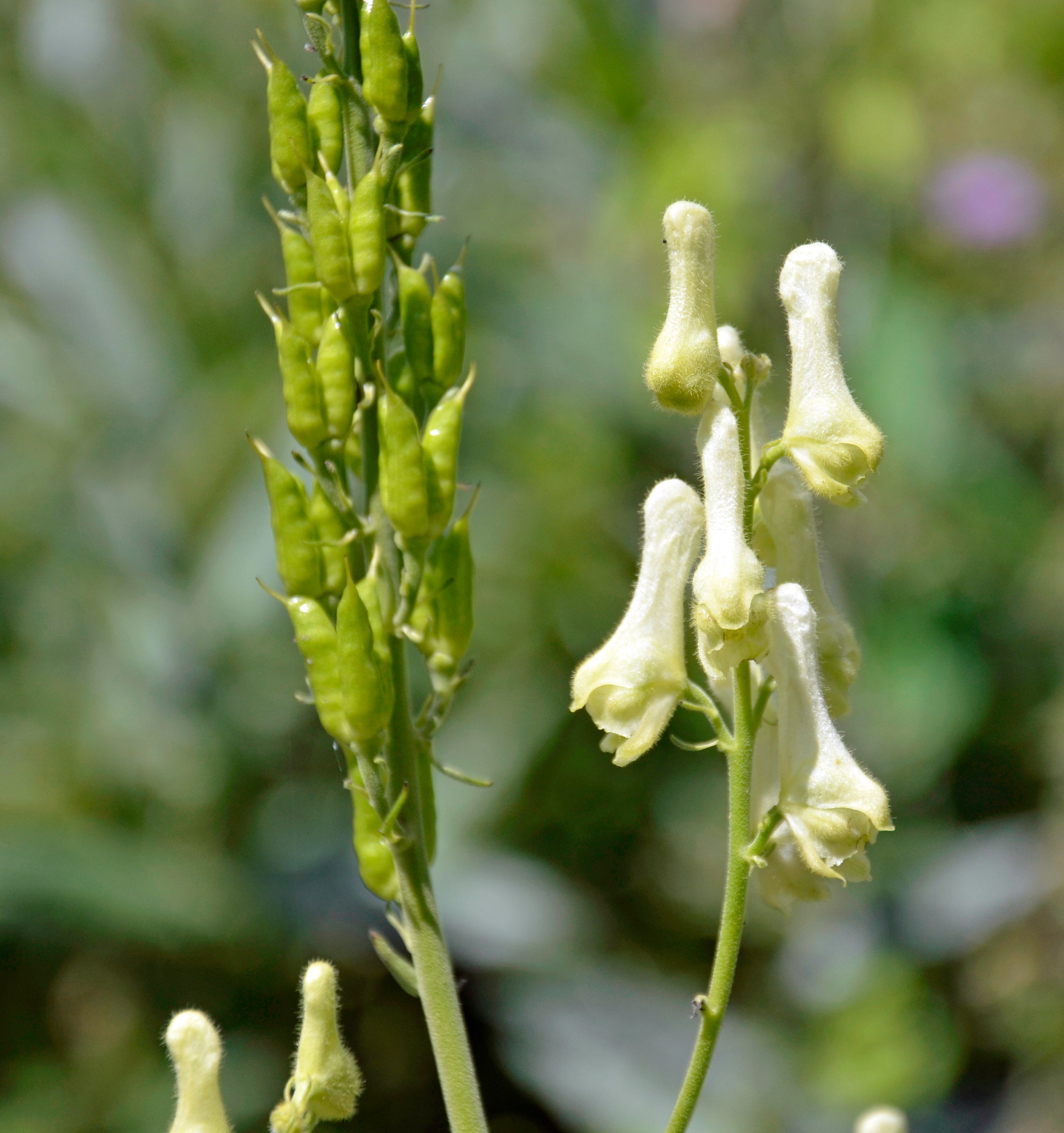Aconitum lycoctonum subsp. neapolitanum
Approx. 0.5 litre pot
About this cultivar:
Aconitum lycoctonum subsp. neapolitanum was previously know as Aconitum lamarckii which honors Jean Baptiste Antoine Monet de Lamarck, an 18th century French naturalist. Lamark also contributed to areas of meteorology, physics, chemistry, & shell-collecting. He was also involved in evolutionary theory, his Philosophie zoologique (1809) anticipating much of Darwin's Descent of Man (1871). Like many of these great minds I could go on... but lets talk about the plant.
A subtle plant and a a native of the Alps & Pyranees. It likes a cool area of the garden. If planted in sun it may be somewhat stunted but healthy; in dappled shade the flower stems grow tallest. It is cold-hardy, but can be damaged at the height of summer if it gets too much sun or the soil dries out. The buds come out long before they flower which gives it quite a lasting appeal.
Margery Fish, writing in 1964 in A Flower for Every Day, has this to say:
"Aconitum lycoctonum may not have enough colour for everybody, but some of us enjoy the greeny cream narrow flowers, perched like birds on rangy stems. It is not a compact plant and likes to behave in our gardens as it does in its native Austria. It doesn’t take kindly to restraint, so the thing to do is to grow it with perennials with which it can intermingle and make a pleasing picture. I have it in front of tall species Phlox paniculata, which has soft lavender flowers, and behind that is a big clump of Achillea [filipendulina] ‘Gold Plate"
- Position: Full sun, partial shade (better in partial shade)
- Soil: Almost any soil (that is not too dry)
- Flowers: June, July, August
- Other features: -
- Hardiness: H7 - Hardy in the severest European continental climates (< -20°C), Fully hardy
- Habit: Columnar or Upright
- Foliage: Deciduous
- Height: 105 to 135 cm (3.5 - 4.5 ft)
- Spread: 30 to 60 cm (1 - 2 ft)
- Time to full growth: 2 to 5 years
- Plant type: Herbaceous Perennial
- Colour: White, green, cream
-
Goes well with: Cirsium rivulare 'Atropurpureum', Geranium 'Rozanne', most kinds of woodland plants - nice in partial shade under a tree, Monarda. Experiment with grasses!
.
About this genus:
Aconitum is an erect, tuberous-rooted perennial that features dense panicles of hooded flowers atop rigid, leafy stems. The upper sepal of each flower develops into a large, helmet-like structure that somewhat resembles the hood worn by medieval monks, hence the common names of monkshood and helmet flower. Leathery, dark green leaves are deeply divided into 3-5 lobes. All parts of the plant (especially the roots and seeds) are extremely poisonous - so watch out!Aconitum carmichaelii (which used to be known as Aconitum fischeri) is a species of monkshood sometimes called autumn-flowering monkshood because of its late summer to early autumn bloom. It blooms later than most other species of Aconitum. Aconitum napellus blooms mid-summer and is supposed to be native to Europe (but probably isn't since most Aconitum are found in Asia). The x cammarum cultivars of Aconitum have bi-colour flowers and also bloom in midsummer.
Most Aconitum prefer part shade. However you can try growing them in very shady areas or full sun as long as it is not too dry. They are often put near woodland type borders or perennial borders - however you can be bold and try them with some tall grasses!




